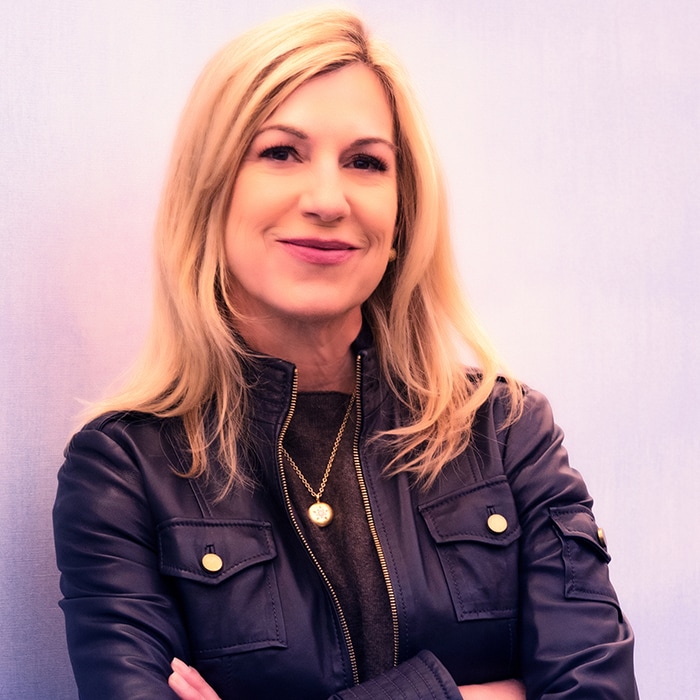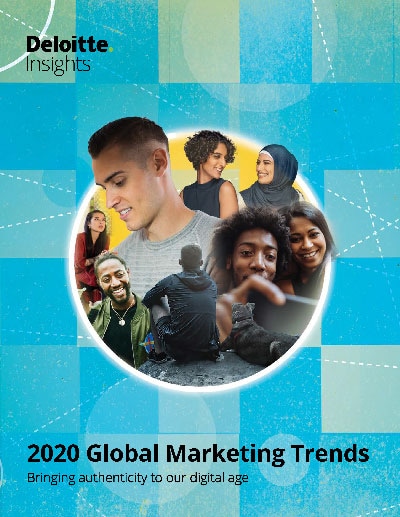
Fusion is the new business blend How the convergence of ecosystems sparks new business models and greater collaboration
10 minute read
15 October 2019
 Diana O'Brien United States
Diana O'Brien United States Andy Main United States
Andy Main United States Suzanne Kounkel United States
Suzanne Kounkel United States Anthony R. Stephan United States
Anthony R. Stephan United States
Traditional boundaries between companies are disappearing, creating an unprecedented fusion of new business models. Consider what new collaborations and opportunities could be in store for your organization.
With ecosystems becoming the norm across industries, it has never been easier for companies to enter areas outside their domains. There are likely a couple of reasons for this: First, the rise of cloud data and connected technologies has led to a large number of interactive platforms which have brought once-isolated industries together to solve customer needs holistically. Second, our collective ability to access external resources through the gig economy has made new categories of cross-industry talent accessible to companies. To put it simply, traditional boundaries between industries are disappearing, signaling a great fusion of once disparate industries (see sidebar, “Fusion 101” for more information). Consequently, brands are transcending from being isolated entities to becoming members of far-reaching ecosystems.
Learn more
Explore 2020 Global Marketing Trends
Download the full report or create a custom PDF
Explore the Marketing & sales collection
Subscribe to receive related content from Deloitte Insights
Download the Deloitte Insights and Dow Jones app
Many companies, even those that are leaders in their industry, are being compelled by this wave of fusion to find new ways of establishing themselves in these much broader ecosystems—or risk being disrupted by new competition. Many leading brands are now asking themselves: “What business are we in and how do we move outside the conventional construct and redefine who we are?”
While fusion may be new territory for some, the idea that businesses should expand their scope to find growth opportunities and fend off competition has existed for decades. As far back as 1960, Harvard Business School professor Theodore Levitt cautioned businesses on the dangers of narrow thinking.1 In his seminal article, “Marketing myopia,” Levitt takes the reader through a litany of examples in which companies were hurt by focusing primarily on product superiority. For instance, the railroad industry was overtaken by automobiles and planes because it didn’t acknowledge it was in the transportation business; the film industry didn’t know it was actually in the entertainment business and, therefore, was quickly outpaced by television; and corner grocery chains didn’t see the value of one-stop supermarkets—even if the customer had to travel a little further. In each case, company executives missed the point: They were focusing too narrowly on what they did, and not on what the customers they were serving needed.
Fusion 101
Fusion denotes the erasure of boundaries between traditionally distinct industries, enabled by companies’ newfound abilities to access technology and talent that spreads across boundaries. It requires businesses to move beyond industry silos and recognize they are operating within broad ecosystems, requiring a rethinking of capabilities, brand, partnerships, and its entire existence. Businesses embracing this convergence, or fusion, are capitalizing on symbiotic relationships by reconsidering:
- Scope of customer insights beyond their industry of origin
- Cross-industry competitors and partners relevant to their business
- Participation beyond traditional industries in ecosystems
In the 60 years since Levitt’s article was published, fusion has only amplified in impact. Earlier, businesses risked being disrupted because they were too focused on the product rather than the customer. Now, as technology rapidly erodes traditional barriers to entry, companies that do not fully comprehend the value of participating in ecosystems will likely remain more susceptible to disruption by those other than their usual industry competitors.
Indeed, there is a monumental shift underway in how businesses operate—and, in many cases, how they perceive themselves. Many of the businesses that succeed in this climate are taking an unconstrained view of how they serve customers and are rightly breaking out of their traditional industry silos. This typically includes engaging with new partners in the ecosystem, sharing data with many of these partners, and working with different types of talent who often operate outside the four walls of the organization. Promisingly, businesses that ambitiously solve unmet needs through fusion with smart, open ecosystems can systematically displace competitors who are unwilling (or unaware) to do the same.
Fusion at work
Companies are putting fusion to work in innovative ways—from embedding it in their business models to partnering with cross-industry peers in their ecosystems to deliver value to stakeholders. Here are two examples that illustrate the power of fusion:
- Evolving spaces. On the surface, coworking spaces historically provide inexpensive, shared office space for giggers, startups, and anyone looking to find accessible working space. But a closer look shows coworking spaces are evolving by providing the same collaborative, interactive space in new settings. For instance, Life Time Fitness opened coworking spaces at four of its US-based gyms to allow patrons to work and have easy access to exercise in order to “promote a healthy and flexible workstyle.”2 Similarly, hotels such as Hobo in Stockholm and TRYP by Wyndham in Dubai now offer full-fledged coworking options. With over 200 guest rooms, Hobo offers all the usual amenities of a hotel, while presenting itself as “a meeting point, a workplace, an office, or just a nice place to hang out” for the Stockholm community.3 TRYP by Wyndham Dubai has a coworking space called “NEST”—one of the world’s first fully functional and integrated coworking spaces within a major international hotel.4 NEST, which offers services to both hotel guests and nonguests, has evolved into a hive of activity; it offers traditional coworking offerings in an eclectic space, business services, and networking engagements combined with dining, pool and gym access, and free valet parking.5
- An ecosystem for better air quality. Smart city initiatives across the world are at the forefront of fusion. Consider AIR Louisville.6 Louisville, Kentucky’s largest city, previously had one of the highest instances of breathing disorders. By enlisting partners to solve the common unmet need for improved air quality, Louisville’s smart city planners brought together once-separate sectors—health care providers, private technology companies, local government, and citizens—to improve citywide air quality with the help of “smart” inhalers. By aggregating and sharing inhaler usage data, the planners were able to help citizens and medical providers uncover troubling patterns of breathing. Concurrently, city officials redesigned high-risk neighborhoods with more trees and/or altered truck routes to reduce emissions. The initiative led to an 82 percent decrease in inhaler usage throughout the city.
We are seeing the effects of fusion across multiple ecosystems. Messaging platforms such as WeChat are becoming mobile payment and ridesharing platforms; department stores are opening their doors to e-commerce giants and fitness centers to provide more cross-industry wellness services; and automotive companies are turning into ridesharing and micromobility providers. In each case, they’re looking beyond industry boundaries to address customer needs, identify growth opportunities and areas for collaboration, and create new value for customers. Fusion is making brands relevant outside of their industries of origin.
Marketing in the fusion era
At face value, operating in times of fusion may seem like a daunting task. After all, how does one take an unconstrained view on serving people?
The complexity of the task doesn’t mean organizations are unequipped to navigate the fusion wave. It’s simply about leveraging your current assets to expand the scope of who you are serving and why. Specifically, businesses can use their existing assets to identify opportunities where partnerships can create new experiences within relevant ecosystems or continue providing existing experiences but at greater convenience.
This can start with understanding the areas in which your company has capabilities to serve unmet needs, along with the opportunity to partner with others across the ecosystem to holistically serve them. Here’s how marketers can function effectively in the fusion era by redirecting the valuable assets they most likely already have:
- Treat data as the new “dowry.” One way to attract others to participate in an ecosystem is through data. In many cases, this means matching information with new capabilities. For instance, a grocery chain may have accumulated years of purchase data on consumer food spending. In this case, they could potentially partner with health insurance companies to provide lower rates to those who hit certain thresholds for purchasing healthier food.7
- Expand your scope through human-centered insights. Nearly every company today has access to data science capabilities. Rather than deploying these capabilities to solely understand opportunities for customer retention and price optimization, companies can direct these capabilities to uncover where human needs are unmet. This can involve using insights to empathize with people and serve them more deeply and richly to further their end goals.
For example, Kinship, a division of Mars Petcare, wanted to curate new approaches to better address the needs of its customers. To this end, the company launched its Pet Insight Project. Leonid Sudakov, president of Kinship, explained, “We started with this idea of being able to get to understand pets and pet parents in the best possible way, to be able to offer solutions that are really fitting to what their needs are and create the type of solutions that today might not even exist.”8 As part of the Pet Insight Project, Kinship partnered with Whistle to provide pet parents with a Whistle FIT (think Fitbit for pets) to constantly monitor their dog, tracking behaviors such as scratching, eating, and drinking. Data from the Whistle FIT is synced with the dog’s health records during checkups and veterinarian visits with the aim of predicting and preventing potential health conditions.9 Kinship’s goals with partners are to create relationships that allow the company to better serve and understand pets.
Companies are applying human-centered insights to identify gaps in the holiday shopping season as well. Holiday purchasing is not just about online buys or walking through the mall; it’s often a full-day, time-consuming event that includes navigating traffic, finding parking, and trying to beat the holiday rush. Last holiday season, recognizing the unmet need to mitigate traffic and parking hassles during holiday shopping, Old Navy and Lyft teamed up for two days to offer free rides to customers who opted for in-store pickups after making online purchases.10 - Brand permission goes beyond traditional boundaries. Marketers are always looking for access to new segments and areas where they can leverage their existing influence. To this end, they should broaden their scope by untethering their brands from traditional sectors, rebuilding them in a way that shows they stand for something across industries, and redefining who they are without conventional constructs. For instance, Virgin Group, whose purpose is “Changing business for good,”11 parlayed its brand from music to air travel to space travel. Building your brand in this manner creates an asset that can facilitate your entry into new ecosystems while making the brand desirable for new partnerships.
By repositioning core company assets to better navigate the fusion wave, marketers can thus develop solutions with a longer-term, more effective view of addressing human needs—with some help from carefully chosen partners.
What business are you in?
Levitt’s “Marketing myopia” aptly demonstrated the importance of expanding a brand’s perspective beyond what it does today. In the era of fusion, this can mean looking beyond industry boundaries and finding new ways to serve customer needs, uncover disruptive threats, and partner with those who may have once been viewed as the competition. It’s all about asking yourself, “What business are we in?” The answer will guide businesses in navigating the world of fusion, enabling them to define themselves to all stakeholders, and building new and necessary capabilities to extend their work across broader ecosystems.

© 2021. See Terms of Use for more information.
Explore the collection
-
The amplification of consumer participation Article5 years ago
-
Purpose is everything Article5 years ago
-
Valuing your most important asset—talent Article5 years ago
-
Are you a trust buster or builder? Article5 years ago
-
2020 Global Marketing Trends Collection












